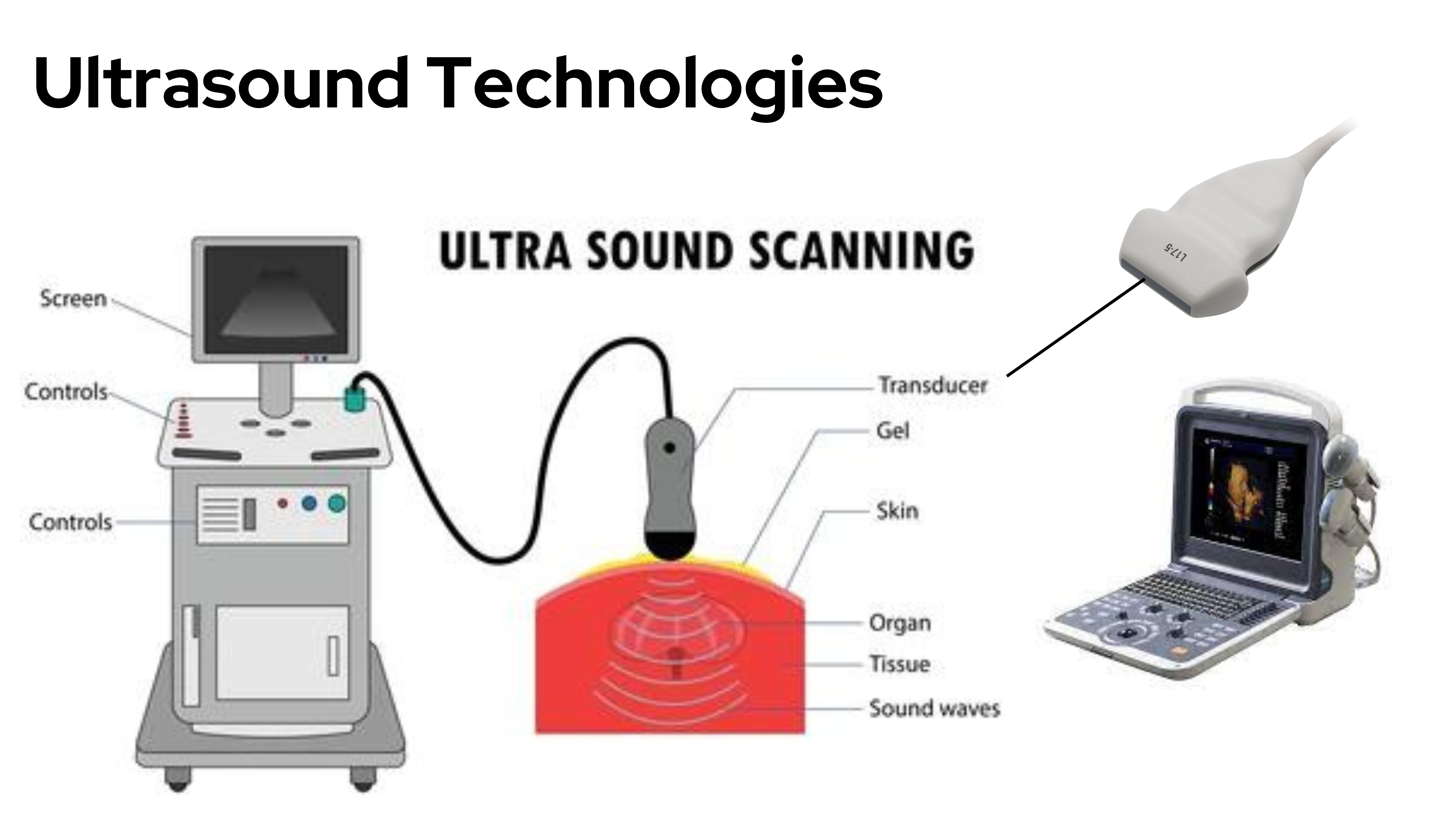Introduction to Ultrasound Technology
What is Ultrasound Technology?
Ultrasound technology, a cornerstone in diagnostic imaging, utilizes high-frequency sound waves to create live images from inside the body. Unlike other imaging techniques, it does not expose patients to radiation, making it a safer option for a wide range of applications, including fetal monitoring during pregnancy and the examination of internal organs. This noninvasive method offers a real-time view, allowing healthcare professionals to diagnose and monitor medical conditions, guide surgeries, and evaluate the health and development of the fetus in utero.
The Evolution of Ultrasound in Healthcare
The evolution of ultrasound in healthcare marks a journey of innovation from rudimentary scans to sophisticated digital imaging that has vastly improved patient care. Initially used in the 1950s, ultrasound technology has grown by leaps and bounds, providing more straightforward, detailed images. This advancement has expanded its applications beyond obstetrics to include cardiology, musculoskeletal, and abdominal imaging, revolutionizing diagnostic procedures and treatment planning.
Becoming an Ultrasound Technician
Educational Requirements
To embark on a career as an ultrasound technician, one typically needs to complete an accredited program in diagnostic medical sonography. These programs, ranging from certificates to bachelor’s degrees, provide foundational knowledge in anatomy, physiology, patient care, and the technical aspects of conducting ultrasound scans. Graduates are well-prepared for the profession’s challenges, having combined classroom instruction with hands-on experience in clinical settings. This educational pathway ensures aspiring ultrasound technicians gain the necessary skills and knowledge to succeed.
Certification and Licensing
After completing their educational requirements, ultrasound technicians must often obtain certification to work in the field. Certification, primarily offered by the American Registry for Diagnostic Medical Sonography (ARDMS), validates a technician’s expertise and competence. While not all states require licensing, certification is highly regarded and sometimes mandatory for employment. It assures employers and patients of a technician’s qualifications and commitment to professional standards.
Skills and Qualities for Success
Successful ultrasound technicians possess a blend of technical skills and personal qualities. They must operate complex ultrasound equipment and interpret the images produced. Strong analytical skills, attention to detail, and a solid understanding of anatomy and physiology are crucial. Equally important are soft skills such as empathy, communication, and the ability to comfort and reassure patients during procedures. These competencies ensure effective patient care and accurate diagnostic results.
The Role of an Ultrasound Technician
Daily Responsibilities and Duties
An ultrasound technician, a sonographer, plays a critical role in the medical field by operating ultrasound equipment to capture crucial images for diagnosing and treating patients. Their day-to-day responsibilities include preparing the patient for the procedure, operating ultrasound machines, selecting appropriate imaging techniques, and interpreting preliminary results for physicians. They must also maintain patient records and ensure the ultrasound equipment functions correctly. This role requires technical proficiency, attention to detail, and the ability to work under pressure.
Specializations in Ultrasound Technology
Ultrasound technology offers several specializations, allowing technicians to focus on obstetrics and gynaecology, abdominal sonography, neurosonography, and cardiovascular ultrasound. Specializing enables technicians to develop advanced skills in specific areas, contributing to more targeted and effective patient care. As they gain experience, technicians may specialize, seeking additional certifications highlighting their expertise in these focused fields.
The Importance of Patient Care in Ultrasound Technology
Beyond technical skills, ultrasound technicians must exhibit exceptional patient care. This includes explaining procedures to patients, ensuring comfort, and maintaining privacy and dignity during exams. The technician’s ability to communicate effectively and empathetically can significantly impact the patient’s experience and the overall quality of care. This emphasis on patient interaction underscores the role’s blend of technology and compassionate care, making it a vital component of the healthcare team.
Specializations in Ultrasound Technology
Ultrasound technology encompasses various specializations, each focusing on different body parts and serving distinct patient needs. These specializations enable ultrasound technicians to concentrate on specific areas of medical imaging, enhancing their expertise and improving patient care.
- Obstetric and Gynecologic Ultrasound: This specialization focuses on the female reproductive system and pregnancy. Technicians capture images and videos of the developing fetus, assess fetal health, and diagnose conditions of the female reproductive organs, aiding in the management of pregnancies and gynaecological health.
- Abdominal Ultrasound: Technicians specializing in abdominal ultrasound examine organs such as the liver, kidneys, gallbladder, pancreas, and spleen. They assess organ health, identify abnormalities, and assist in diagnosing conditions like gallstones, liver disease, and kidney issues.
- Musculoskeletal Ultrasound: This area involves imaging muscles, tendons, ligaments, and joints. It’s beneficial for diagnosing sprains, tears, and other soft tissue injuries and offers a noninvasive tool for evaluating musculoskeletal disorders.
- Vascular Ultrasound: This specialization focuses on the body’s vascular system and helps evaluate the circulation in blood vessels and organs. It’s crucial for detecting blockages and blood clots and assessing the risk of cardiovascular diseases.
- Echocardiography: Echocardiography is dedicated to imaging the heart, assessing its structure and function, and providing critical information on heart conditions, valve disorders, and cardiac performance.
Work Environment and Career Outlook
Typical Work Settings
Ultrasound technicians, or diagnostic medical sonographers, work in various healthcare settings, including hospitals, physician’s offices, laboratories, and outpatient care centers. Their work environment is usually well-lit and clean, with most of their time spent in darkened rooms to better view the ultrasound screens. The role often requires standing for long periods and occasionally assisting patients who need help getting positioned for scans. Technicians typically work closely with other healthcare professionals to provide diagnostic imaging services.
Job Outlook and Career Growth
The demand for ultrasound technicians is expected to grow significantly due to the increasing need for diagnostic imaging for an ageing population and a preference for noninvasive procedures. The U.S. Bureau of Labor Statistics projects a much faster-than-average job growth rate for diagnostic medical sonographers in the coming years. This growth suggests robust career opportunities for those entering the field, with advancements in medical technology also opening new specialties and roles.
Salary Expectations and Advancement Opportunities
Ultrasound technicians enjoy competitive salaries and varying earnings based on experience, education, geographic location, and specialization. The median annual wage for diagnostic medical sonographers is above the national average for all occupations, reflecting the specialized skills required. Advancement opportunities may include moving into management, education, or sales roles within the medical equipment sector, with further certifications potentially leading to higher salaries and positions of greater responsibility.

The Impact of Ultrasound Technology on Patient Care
Advancements in Ultrasound Technology
Recent advancements in ultrasound technology have significantly enhanced the clarity and precision of medical imaging, leading to earlier and more accurate diagnoses. Innovations such as high-definition imaging and 3D/4D ultrasound have expanded their applications beyond traditional uses, allowing healthcare providers to offer noninvasive, real-time visualizations of internal organs, blood flow, and fetal development during pregnancy. These technological leaps have improved diagnostic accuracy, patient comfort, and safety by reducing the need for more invasive diagnostic procedures.
The Role of Ultrasound in Diagnosis and Treatment
Ultrasound is crucial in diagnosis and treatment, offering a versatile tool for monitoring various conditions, from cardiac diseases to pregnancy. Its ability to provide immediate visual information helps make quick, informed decisions, particularly in emergency and critical care situations. Ultrasound-guided procedures have also become a standard, enhancing the precision of treatments such as biopsies and fluid drainage, thereby improving patient outcomes.
Patient Stories and Testimonials
Patient stories and testimonials frequently highlight the positive impact of ultrasound technology on their care experience. Many express gratitude for the noninvasive nature of ultrasound, which offers them comfort and peace of mind. For expectant parents, seeing their unborn child for the first time or regularly monitoring its health has been described as invaluable. Similarly, patients who have undergone ultrasound-guided treatments often share their appreciation for the swift and accurate interventions that helped them recover more quickly and with less discomfort.
Emerging Trends in Ultrasound Technology
Advances in Ultrasound Imaging Techniques
The landscape of ultrasound imaging is transforming, with innovations enhancing image clarity, resolution, and diagnostic capabilities. Recent advancements include the development of 3D and 4D imaging, which offer detailed views of anatomical structures, facilitating better patient outcomes. High-definition imaging and elastography are also emerging, enabling the detection of tissue stiffness related to conditions like liver fibrosis. These technologies are revolutionizing prenatal care, cardiology, and oncology, promising a future where diagnostics are more accurate, noninvasive, and comprehensive.
The Role of AI and Machine Learning
Artificial Intelligence (AI) and Machine Learning (ML) are setting new frontiers in ultrasound technology, automating complex processes, improving diagnostic accuracy, and reducing scan times. AI algorithms can now analyze images for patterns undetectable to the human eye, predict potential health issues, and assist in real-time decision-making during scans. This integration of AI enhances the efficiency of ultrasound diagnostics, enabling personalized patient care and paving the way for advanced predictive analytics in healthcare.
Future Prospects for Ultrasound Technicians
The evolving landscape of ultrasound technology opens opportunities for ultrasound technicians, demanding continuous learning and adaptation to new technologies. As AI and advanced imaging techniques become integral to diagnostics, technicians will need to develop new skills in technology management and data analysis alongside their expertise in sonography. This evolution promises an expansion in the role and responsibilities of ultrasound technicians and increased collaboration with interdisciplinary healthcare teams to deliver patient-centred care.
FAQ: Ultrasound Technician Specializations
1. What are the primary specializations within ultrasound technology?
Ultrasound technology includes several key specializations, such as Obstetric and Gynecologic Ultrasound, Abdominal Ultrasound, Musculoskeletal Ultrasound, Vascular Ultrasound, and Echocardiography. Each area focuses on different body parts and serves specific diagnostic needs.
2. How do I choose a specialization within ultrasound technology?
Choosing a specialization often depends on your interests, the type of patient interactions you prefer, and the conditions you’re interested in diagnosing. Consider shadowing professionals in various specializations or seeking internships to gain firsthand experience.
3. What additional training is required for each specialization?
Each specialization may require additional coursework, clinical training, and certifications beyond primary ultrasound technician education. Specific requirements can vary depending on the specialization and the region or country you plan to practice.
